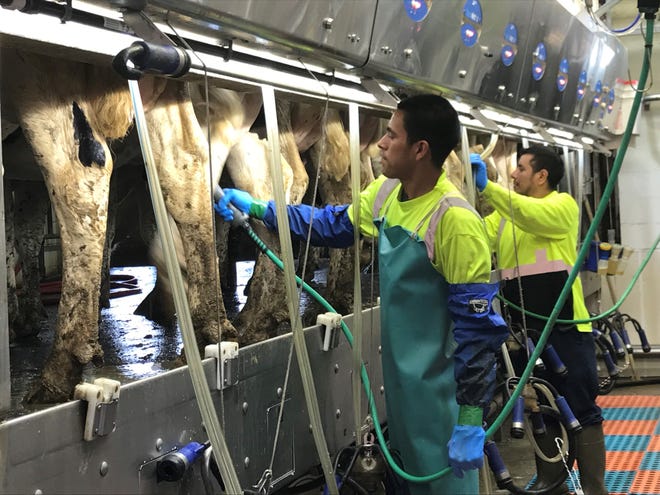And many dairy farmers need to significantly improve the way they manage employees if they are to remain successful, according to Dr. Luke Miller, a member of the Alltech Elite Dairy On-farm Advisory Team.
Miller, a graduate of Michigan State University, spent nine years working as a large animal veterinarian where he practiced all facets of large-animal medicine, and also aided dairymen in design and implementation of protocols and SOP’s.
He has also served as general manager for a large 6,000 head, multi-state dairy in central California where he managed a team of 45 employees and supervised the construction of a state-of-the-art 80-stall rotary milking barn.
Miller recently shared his valuable experience and expertise from every level of a dairy operation with more than 150 men and women who are actively involved in dairy farming in Wisconsin and elsewhere in the Midwest.
“The dairy industry is too reactive when it comes to providing labor for their farms,” he declared. “There’s a lack of structural organization in hiring and managing human resources (HR), and dealing with an unknown workforce.”
Lack of education
He stressed that dairy farmers need to be more proactive, creating a workable structure for hiring and retaining employees.
“The reality is that most employees have had little access to education, no dairy experience and no connection to the dairy industry,” Miller said.
Of those currently working on California dairy farms, a majority of employees have only a second-grade education, just 9% have completed the sixth grade and only 2% have advanced to the 10th grade,” he said. “Although 57% of the employees have some agriculture experience, only 2% have worked with cattle.”
Miller emphasized that dairy is competing with many other, more organized, industries. “The work is hard, often with long hours, and many see little room for workers to grow and advance.”
Organizational structure
He noted the organizational structure too many owners have is: Me, Me & the herdsman, and the rest of the workers.
“No one can have two bosses. He will listen to the one and work against the other,” Miller stressed.
The proper organizational structure, according to Miller, is the owner at the top, who supervises the herdsman/farm manager, with the rest of the family off to the side.
“The herdsman/manager should be the person overseeing the lead production technician, feed delivery technician, night technician, facilities technicians and relief day technicians. The lead production technician should oversee the production technicians,” he explained.
“Farm owners need to bring clarity through job descriptions, key performance indicators and accountability,” he stressed. “A worker can have only ONE boss!”
Miller stated that titles infer positions, and that employees are drawn to designations and monitor movement up and down. “Using job descriptions promotes hard work and dedication,” he said.
Regular meetings
“Hold regular periodic management meetings,” Miller advised. “Practice the four ‘I’s’ of effective farm management: Innovation, inclusion, investment and implementation.”
He stressed that management meetings must have a clearly defined structure and must be attended by all employees and managers. “Meetings must have a set agenda, including a brief discussion of activities, group interaction, discussion and action items.
“Make sure everyone has a turn to speak; all voices must be heard at these meetings,” he said. “Monitor success and work to limit failure. Also, encourage employees to present new ideas.”
To ensure employee engagement and accountability, the meeting structure must include tasks the workers have accomplished, and what they didn’t accomplish, according to Miller. “It’s important to learn why they didn’t accomplish their tasks, and then devise a plan to help them meet goals going forward.”
Miller also encouraged farm owners to consider utilizing a labor profile test to help predict worker reliability, adherence to rules, and help match responsibilities to employee skills.
“A dairy culture survey can help determine if a prospective employee will be a good fit for the dairy,” Miller said. “It’s vital to the overall success of the dairy to properly evaluate team members on their personal growth and success.”










